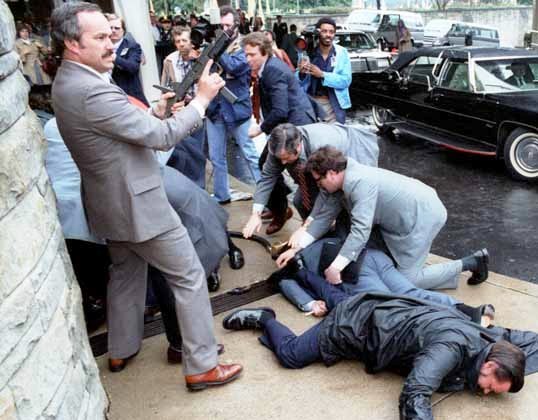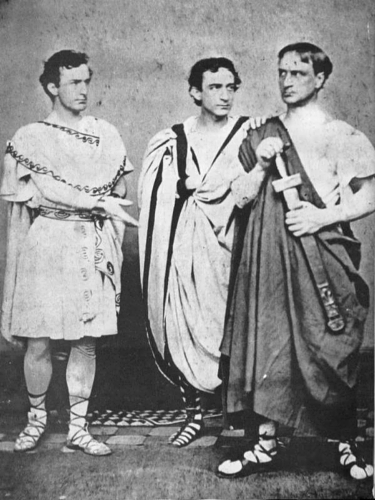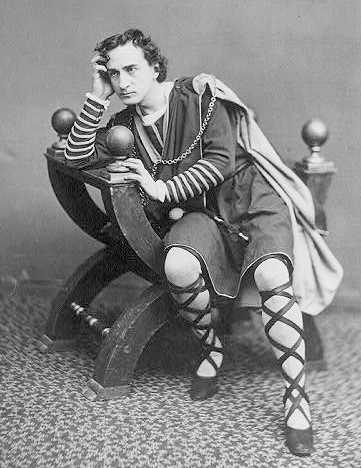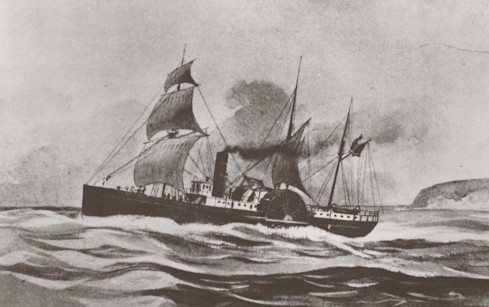Ripley Entertainment Inc.'s Blog, page 316
September 28, 2018
The Montreal Midget Palace: Where Visitors Felt Like Giants
Featured in Ripley's Believe It or Not!

Philippe Nicol had had enough.
He was a man who had dwarfism, just 36 inches tall, and he was tired of seeing others with the same affliction being exploited in what were known as Freak Shows in the circus. Born in 1881 as the seventh son of a seventh son near Quebec City, Nicol’s father was rumored to have been 6-foot-3, a mountain of a man for the time. But Nicol was so small he was held out of school for six years. And at the age of 12, he decided to quit and go into vaudeville.
Like many others who suffered with some kind of handicap in the mid-1900s, Nicol was hired by Barnum & Bailey to perform in their circus. But he showed a knack for business. He sold autographed pictures of himself, which earned him more money than his salary, and by the age of 15 he’d taken over the management of all his own personal affairs.
He traveled the world as part of the Barnum & Bailey so-called Freak Show, and while in the U.S. in 1906 he met Rose Dufesne, who was also a dwarf. By 1913 they were married, and Nicol had accumulated enough of a fortune that he was able to move the couple back to Montreal.

It was then they decided to take matters into their own hands.
Similar to the way comedians use self-deprecating humor to make fun of themselves before others can, the Nicols decided to create a way to exploit their short stature for their own gain. They created what they called The Midget’s Palace, turning their home on Rachel Street on the east side of town into a museum for those with dwarfism.
A flier asked people to come see “The Smallest Married Couple on Earth” in “Their Miniature House.” They called themselves the Count and Countess Nicol, and the “King and Queen of all Midgets.”
They bought tiny furniture, including scale-sized appliances and a piano, and they invited tourists to come and spend time with them to see what their lives were like. For a nickel, tourists could come and feel like a giant for a day. The scheme worked.

Buses of tourists came in droves, and it became one of the most successful tourist attractions in the city. Some remember it being referred to as The Dollhouse.
“You can see midgets everywhere,” one advertisement read. “But you cannot see them in their own castle like us.”
While creating a comfortable life, Nicol and his wife set about having a family. On Sept. 19, 1926, they had a son, Philippe Jr. He was also a dwarf, and — perhaps most surprising of all — he would become even more famous because he would turn to a life of crime.
Nicol Sr., by this time known as “the richest dwarf in the world,” died when his son was just 13 on May 27, 1940, so he wasn’t able to be with him in his most formative years.
Nicol Jr. first attempted to be a boxer, as many of the time enjoyed watching little people fight. But he instead turned to robbery, and was arrested at the age of 25 for robbing a tobacco store. He was incarcerated for more than two years, while many think he may have been responsible for many more crimes.

His mother, Dufresne, died in 1964.
It was rumored that Philippe Jr. may have taken over ownership of The Midget’s Palace in 1971. But by 1972, other Huguette Rioux, who had worked at the site, bought the venue. Rioux, also a little person, came to the Palace because she couldn’t find work elsewhere.
When she took over, she tried to make it more of an educational experience. She re-framed it as a museum and even rented out rooms to little people so they could stay there. She even founded the Little People’s Association of Canada.
But many saw the Palace as nothing more than a sideshow, and by 1990, it was permanently closed. Condominiums now stand on the site.
Penniless, Philippe Jr. died April 6, 1992, in Montreal.
By Ryan Clark, contributor for Ripleys.com
Source: The Montreal Midget Palace: Where Visitors Felt Like Giants
CARTOON 09-28-2018
September 27, 2018
Bicycle Ballerina Takes Artistic Cycling Stunts To The Streets
Featured in Ripley's Believe It or Not!

Lea Schaepe of Potsdam, Germany, can do a lot more than ride a bike while standing on the handlebars. Practicing the 130-year-old sport of artistic cycling, Lea has learned to ride her bike in many unconventional ways. Having won a dozen national competitions in Germany, Lea’s taking her bike to the streets!
Artistic Cycling
Cycling races began to hit their stride in Paris, 1868. Among the many racing sports, one man, Nick Kaufmann, showed audiences something new. He performed acrobatics on his bicycle. Wooing crowds with his unique displays—in a sport that was gaining widespread popularity—Kaufmann made the connections he needed to organize a competition revolving around artistic cycling. In 1888, he became the world champion of “Professional Cycle Trick Riding.”
The sport has morphed over the years and now is really only popular in Europe—championed in particular by Germany. Modern competitors demonstrate various tricks indoors, earning points as they perform. Much like ballet or gymnastics, participants compete in five-minute rounds before a panel of judges.
To perform the delicate balancing tricks and backward motion, artistic cyclers use fixed-gear bicycles. The gear ratio is typically 1:1 and the tires are of proportionate size. The handlebars are similar to those found on a racing bicycle, but are upside-down in comparison, giving the cyclists room to maneuver. The front wheel also has to be free to spin 360°.
Using these special bikes in conjunction with many long hours of practice, riders perform handstands, wheelies, body-surf, and attempt as many other tricks as they can in their allotted time. Judges evaluate participants on the number of tricks, execution, form, and degree of difficulty.
Believe it or not, performances can consist of up to six people. Multi-person teams can use multiple bikes, switch, ditch, and share!

From conga-dancing dogs and bicycling ballerinas, to hair-raising feats of strength and death-defying motorcycle stunts, Ripley’s Believe It or Not! A Century of Strange! is sure to delight readers of all ages. With over 1,200 weird-but-true stories from around the world and 256 pages of wild and wonderful photography, this year’s collection of all things odd is not-to-be-missed.
QUIZ: Which A Century of Strange Personality Are You?
Are you like the bicycle ballerina? Find out which friendly (or freaky!) face from Ripley’s Believe It or Not! A Century of Strange you are! Take this quiz to find out!
Don’t miss out on being an ODDthority on everything strange, get your copy on Amazon today!
Source: Bicycle Ballerina Takes Artistic Cycling Stunts To The Streets
Does Peeing On A Jellyfish Sting Stop The Pain?
Featured in Ripley's Believe It or Not!

Or Not
In today’s world many misconceptions have been perpetuated—becoming modern day “facts”—when, in reality, myths and hearsay have taken over. Sorry to burst your bubble, but in this weekly column, Ripley’s puts those delusions to the test, turning your world upside down, because you can’t always…Believe It!
Today: Does urine ease the pain from a jellyfish sting?
The Frightful Jellyfish Sting
When Monica from the popular nineties sitcom Friends got stung by a jellyfish during a trip to the beach, Joey had a solution. “There really is only one thing you can do…You’re gonna have to pee on it,” he said to her horror, noting that he learned about the method by watching the Discovery Channel. Chandler added that the ammonia in urine helps kill the pain. In the end, Chandler was coaxed into doing the deed because Monica couldn’t “bend that way” and Joey got stage fright. But did they do the right thing?
Don’t believe everything you see on TV. In reality, peeing on a jellyfish sting does not stop the pain and may actually cause the sea creature’s nematocysts to inject even more venom into its victim.
“It can cause massive stinging,” according to venom expert Christie Wilcox from the University of Hawaii who has co-authored two papers on jellyfish sting treatment.

Jellyfish swim in oceans all over the world and have existed for millions of years. Their tentacles contain thousands of small stingers called nematocysts, which are used to catch prey or for self-defense. These specialized cells can be painful to anyone or anything that comes into contact with them.
Most jellyfish stings are not deadly. They may cause numbness, burning, itching, and tingling and leave a red mark on the skin. The exception is the box jellyfish, which can be very dangerous and potentially fatal to unsuspecting victims. These jellies live in Australia, the Philippines, the Indian Ocean, and the central Pacific Ocean.

It’s not uncommon for a swimmer to get stung without even realizing it, and the pain is immediate. It’s inadvisable to itch or rub the affected area because additional venom may be released into the skin. Depending on the type of jellyfish, the pain should subsist within 24 hours.
So, what should you do if you get stung by a jellyfish? Experts recommend treating it by immediately washing the skin in vinegar to stop the nematocysts from discharging more venom. Rinsing the sting in freshwater will actually intensify the pain because it disturbs the balance of salts in the stingers. Applying urine to the skin is not a good solution because while it does contain salts and electrolytes, the concentration varies from person to person and may cause the stingers to fire even more.

After rinsing the skin, the nematocysts are deactivated. Any tentacles left on the skin should be removed with tweezers, not scraped off with an object such as a credit card. Heat should then be applied to the area.
By Noelle Talmon, contributor for Ripleys.com
CARTOON 09-27-2018
September 26, 2018
Operation Plowshare: Finding Peaceful Ways To Use Nukes
Featured in Ripley's Believe It or Not!

In the late 1950s, the United States government had already realized the destructive potential of nuclear weapons. As the world turned away from war, however, and entered a new era of technological innovation and economic prosperity, scientists believed they could also use the atom for more friendly endeavors.
While some nuclear engineers sought to bring the fission process under control for things like nuclear power plants, other scientists sought to use atomic bombs themselves as tools for peace.
Operation Plowshare began in 1958. The project was pushed into formation as Egypt nationalized the Suez Canal. Political strategists wanted to know if it was feasible to build a second canal using nukes. This question kickstarted a whole movement, with scientists not asking if nuclear devices were the best solution to a problem, but instead asking what problems could be solved with a nuclear blast.
Excavation quickly became the projects focus. The first experiment was dubbed “Sedan.” Scientists managed to create a giant crater in the Nevada desert. They displaced 12 million tons of Earth, but the test site was incredibly radioactive. It took seven months before people could stand in the crater without protection.

Seeing the Sedan crater as a success, the project’s scientists quickly formulated all sorts of civil engineering projects to make use of atomic explosions.
Project Chariot
One project hoped to use nuclear excavation to create an artificial harbor in Alaska. They planned to detonate 2.4 megatons of nuclear ordinance to create an inland pool of sufficient depth for ships, then connect it with a channel to the sea. Project Chariot came incredibly close to being carried out. The higher-ups were so impressed with the plan that they identified 33 other sites around the world as candidates for bomb-made harbors. In 1962, however, the project was called off. The harbor faced massive opposition from nearby residents, and the military and economic value of the harbor’s location was never adequately justified.
A Better Panama Canal
Ever-confident in the advancement of nuclear excavation technology, Plowshare’s next idea was to bore canals between oceans and seas. The Panama Canal may have been a great feat, but Plowshare scientists proposed a sea-level canal, one that didn’t require troublesome lochs.
They proposed a bigger and better Panama Canal, a channel to the Dead Sea for generating hydroelectric power, and even filling an enormous artificial lake in the Sahara.

Environmental Impact
While some of the economic concerns of using nuclear devices for construction made sense on occasion, environmental impacts made almost every proposal impossible. Though the operation did perform 27 nuclear tests on American soil. Though these tests did create a booming tourist industry in Las Vegas, they never really yielded results that made the technical challenge of harnessing fission for direct excavation.
To this day some test sites remain radioactive, and many caused farm blights, town relocations, and water contamination. As the Cold War thawed, diplomats became increasingly interested in denuclearization, and Plowshare’s ambitions eventually became impossible due to treaty negotiations.
Source: Operation Plowshare: Finding Peaceful Ways To Use Nukes
CARTOON 09-26-2018
September 25, 2018
A Bone Trumpet Made For Calling Demons
Featured in Ripley's Believe It or Not!

One of the oldest and most famous instruments in Tibet is the bone trumpet, also known as a kangling.
Made from a human thigh bone, at some point a Buddhist monk cut off one end to make a mouthpiece, then bore holes in the other end for air to pass through. Then came the careful process of clearing the marrow channel and completing the airway.
These trumpets can simply be bone or ornately adorned. Delicate carvings of mythological dragons, ornately shaped silver, leather wrappings, and turquoise were used to decorate the trumpets, as well as preserve them. As bone dries, it becomes fragile. Metal and leather decorations were oftentimes utilitarian as well as decorative.
The trumpet was often paired with a drum made from the tops of human skulls known as damaru. These drums would be played in the right hand while the trumpet was played in the left—the hand of wisdom.

The beautiful songs played on these grisly instruments symbolized the duality of life and death, helping the practitioner to better understand the emotional attachment they had to their own body. The trumpets sound was often seen as a method of calling hungry or even evil spirits to a ceremony, with kangling players seen as demonstrating their fearlessness.
Believe it or not, the bone trumpet itself predates the arrival of Buddhism in Tibet. These trumpets were part of a complex ritual system involving sky burials before monks arrived in Tibet. Instead of supplanting Tibetans old beliefs, Buddhism incorporated many of the Tibetans practices instead, creating an amalgamation of ancient Tibetan rituals with Buddhist principles and beliefs. By the time western powers began exploring the area, Tibet had become notorious for using human remains in the religious ceremonies, especially in the eyes of European explorers.
Questions Surrounding The Assassination Of Abraham Lincoln
Featured in Ripley's Believe It or Not!

On April 14, 1865, Abraham Lincoln attended the play “Our American Cousin” at Ford’s Theatre in Washington, D.C.
It would be the last time anyone saw the President alive.
That night, an actor and Confederate sympathizer named John Wilkes Booth slipped into Lincoln’s private box and fired his .44-caliber Derringer pistol into the back of the President’s head.
Booth then leaped from the box onto the stage, where he ended up breaking his leg. He shouted “Sic semper tyrannis!” which happened to be the state motto of Virginia. Translated from Latin it means “Thus ever to tyrants!”
As Booth made his escape, Lincoln was taken to a house across the street where he died at 7:22 a.m. the following day. He was 56.
Booth was eventually found and shot by Union soldiers, and four of his co-conspirators were put to death. In an ironic twist, Lincoln was shot just five days after Confederate General Robert E. Lee surrendered his army at Appomattox Court House in Virginia, effectively ending the war.
But that was far from the strangest thing to happen surrounding the President’s assassination.
Here are 10 other strange facts:
1: Where was the Secret Service?
They were, technically, not mobilized yet. Because, in an even more ironic twist, Lincoln signed the bill to create the Secret Service the night before he went to see the play.

Secret Service agents thwarting an assassination attempt on Ronald Reagan.
2: Where was Lincoln’s bodyguard?
His name was John Parker. And he has become famous—or infamous—because he went to the saloon next door during intermission and never returned.

Lincoln’s long-time bodyguard, Ward Hill Lamon, had switched out from protecting Lincoln just before the trip.
3: What happened to the others in the Presidential box?
The answer is, they did not fare well. After the shooting, Booth then slashed diplomat Henry Reed Rathbone’s left arm, and while Rathbone eventually recovered from the stabbing, he undoubtedly suffered from post-traumatic stress. Just before Christmas 1883, he killed his wife (the other member in the box that night) before trying to stab himself. Again, he survived and lived the rest of his life in an asylum. The fourth person in the box that night was Mary Todd Lincoln, who was also sent to an asylum in 1875.

John Wilkes Booth’s dagger.
4: Who was John Wilkes Booth?
Let’s just say it wasn’t the first time he’d threatened the President at Ford’s Theatre. Two years prior to the shooting, on Nov. 9, 1863, Booth starred in a performance of “The Marble Heart” at the theatre. The Lincolns were present, and at least two times Booth used instances in the play to hurl insults at the President. A third time, he even pointed at Lincoln, which the President noted afterward. It was a harbinger of the violence to come.

John Wilkes Booth, left, as Caesar.
5: What other tragedies happened at Ford’s Theatre?
John Wilkes Booth’s brother, Edwin, died on June 7, 1893. At the exact time his funeral took place at the Church of the Transfiguration in New York City, a 40-foot section collapsed from the third floor of Ford’s Theatre, killing 22 people.

6: And what about that Edwin Booth fella?
Interestingly enough, Edwin was a hero — he saved the life of Lincoln’s son months before the assassination. Robert Lincoln fell on to a New Jersey train track before Edwin pulled him to safety.

Edwin was an actor, like his brother. Here he’s portraying Hamlet.
7: What were the President’s last words?
During the play, the President leaned over and held his wife’s hand, something that was considered rather scandalous for the day. Mary Todd Lincoln asked her husband what Rathbone’s fiancée would think, and the President responded: “She won’t think anything about it.”

8: Where was Lincoln taken after he was shot?
He was taken to the house of William A. Petersen, a tailor. On June 19, 1871, Petersen accidentally took too much alcohol and opiates and was found passed out on a local park bench. After medics tried to pump his stomach, he passed away. His wife died exactly three months later.

Lincoln’s deathbed at the Petersen House.
9: Who comforted Mary Todd in her moment of grief?
That would be family friend Dr. Anson G. Henry, who moved back to Illinois with the former First Lady in May 1865. Unfortunately, just a few months later he drowned when the ship he was a passenger on, Brother Jonathan, sank off the coast of California.

The SS Brother Jonathan
10: And what about the President’s son, Robert?
Robert was in the White House when his father was shot at the theater. On July 2, 1881, he was with President James A. Garfield at the local railroad station when Garfield was shot by assassin Charles J. Guiteau. And on Sept. 6, 1901, when President William McKinley was shot by Leon F. Czolgosz in Buffalo, Robert was just arriving into the city on a train. Maybe folks just needed to stay away from that kid.

Robert Lincoln (right) with Warren Harding and William Taft.
BONUS: Booth’s Second Pistol
Believe it or not, the particulars of John Wilkes Booth’s actions in the ensuing manhunt largely remain a mystery. Regarded as one of the most important historic items in the Ripley’s collection, a pistol inscribed with “J. Wilkes Booth,” thought to be left behind on the stage the night of the assassination is presently held at our Baltimore Odditorium.

By Ryan Clark, contributor for Ripleys.com
Source: Questions Surrounding The Assassination Of Abraham Lincoln
CARTOON 09-25-2018
Ripley Entertainment Inc.'s Blog
- Ripley Entertainment Inc.'s profile
- 52 followers







